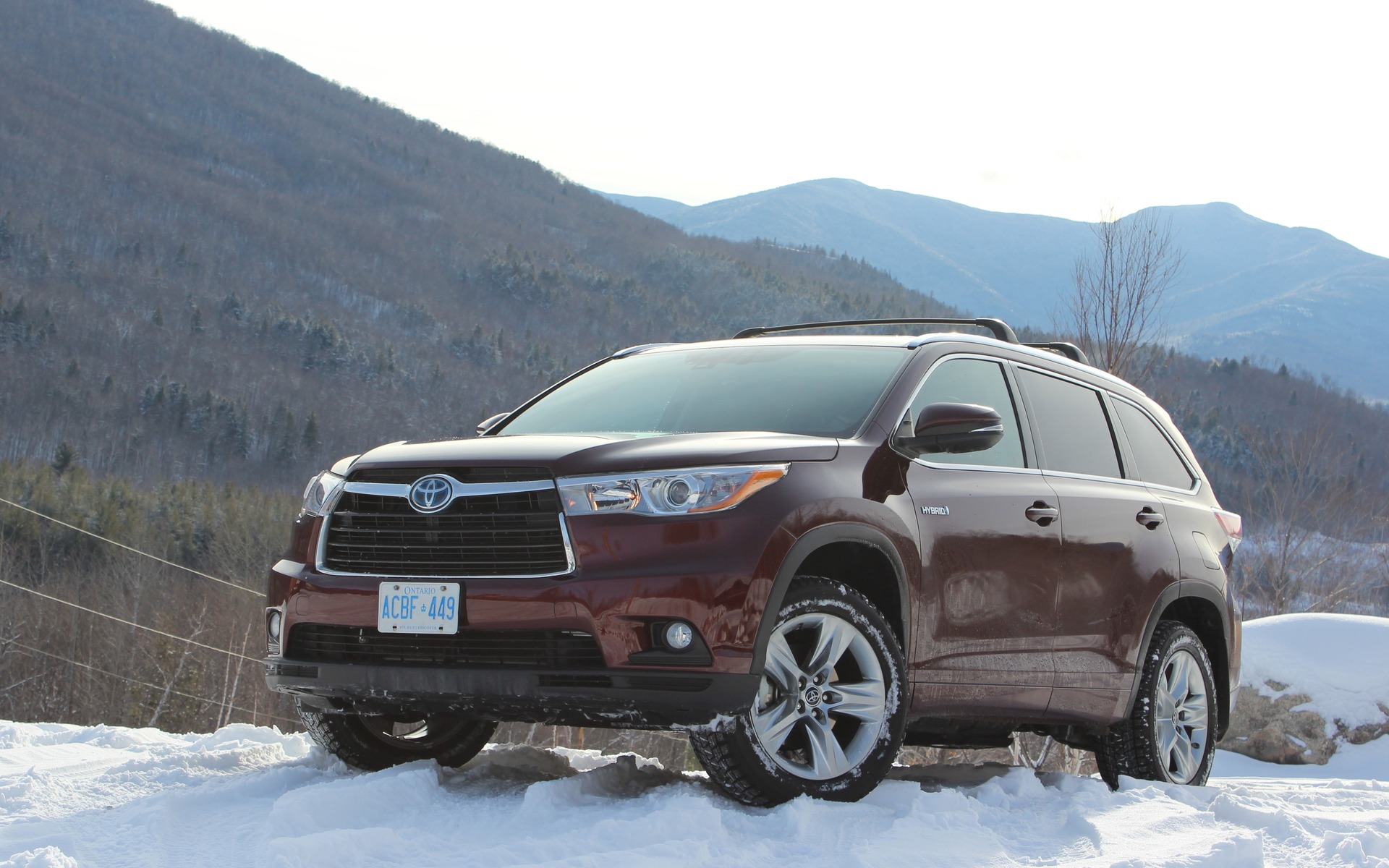2016 Toyota Highlander Hybrid: the Eco-Friendly Vehicle for Blended Families


According to Statistics Canada, the average number of kids in the house of a single mother is 1.6, and it’s 1.4 in the house of a single dad. When these two types of people meet and it’s love at first sight, they might shack up together. The newly formed household will then include an exact count of three children.
And as the progeny of this blended family approaches adolescence, as it’s the case in my home, it takes a big vehicle for road trips to visit the grandparents. At least if we want to ride in peace and quiet. So for this type of family that is concerned about the environment or their pocketbook, there’s the 2016 Toyota Highlander Hybrid.
Read also
Vehicles that can accommodate at least seven passengers and that consume 8.5 L/100 km can be counted on the left hand of an unskilful carpenter.
And since my blended family was planning to visit the grandparents in New Hampshire, the time was right to evaluate the Highlander Hybrid’s fuel economy on a long road trip.
Power to all fours
Around town, Toyota’s SUV does its job commendably, and stands out from its competitors in regards to fuel consumption. Those rivals include the Ford Explorer, the Dodge Durango, the Nissan Pathfinder, the Hyundai Santa Fe XL, the Honda Pilot, the Chevrolet Traverse and the GMC Acadia.
The 2016 Toyota Highlander Hybrid’s powertrain consists of a 3.5-litre V6 that runs on an Atkinson cycle in addition to two electric motors, each connected to their own axle. There’s also a third electric motor that serves as a generator, an engine starter and that manages the continuously variable automatic transmission’s ratios.
Combined output is rated at 280 horsepower, allowing for quick getaways and passing times. The vehicle also benefits from an all-wheel-drive system with the contribution of the electric motors and their electronic management. This system is dubbed i-AWD by Toyota, the lowercase vowel obviously signifying that it’s an intelligent one. It works as it should, although on snow-covered roads, it doesn’t feel as capable as a good conventional AWD setup. The Hybrid version’s towing capacity is rated at 3500 lbs. (1588 kg), slightly inferior to the norm in the midsize SUV segment.
Nothing to prove in the city
With a little eco-driving and making good use of the EV mode, which forces a fully electric drive at speeds below 45 km/h or so, we can end up consuming between 8.5 and 9.0 L/100 km. However, on the highway, the electric assistance isn’t very useful at higher speeds. At the conclusion of our test, we registered an average of 9.9 L/100 km.
That’s an excellent result for a seven-passenger SUV, although the non-hybrid version of the 2016 Volvo XC90 recently handed us the same fuel economy average. And since the hybrid version of the Highlander has a smaller fuel tank than its non-hybrid bother, we won’t be stopping less frequently at the gas station.
For seven or eight, but more for five
The 2016 Toyota Highlander Hybrid comes standard with room for eight, thanks to its second- and third-row benches. The Limited trim level we drove is rather equipped with middle-row captain’s chairs for a total capacity of seven passengers. However, on a road trip with three teens and pre-teenagers on board, it’s better that each have their own space.
To do that, I left one third of the rearmost bench upright for one of the three kids, and the rest folded down for luggage. Even if the cargo area is full, we can still stuff some last-minute junk through the rear window, which opens independently from the liftgate. Maximum volume is about average in the Highlander’s class, beside those of the Explorer and the Pathfinder.
On the other hand, the front seats aren’t the most comfortable for long trips. Despite a power-adjustable cushion extension for the driver, my legs were sore after an hour on the road and I kept squirming on my seat. In back, the kids didn’t complain even though their seat cushions were low to the floor. The panoramic sunroof does admittedly help reduce the feeling of confinement back there.
The Highlander, redesigned for the 2014 model year, offers a more enjoyable drive than before, with a more communicative steering system as well as a suspension that’s firm, but that nonetheless soaks up road imperfections.
The dashboard switchgear is well laid out and easy to use while driving. As for the JBL sound system in the Limited grade, it provides good output from its 12 speakers. This SUV is also equipped with Toyota’s EasySpeak system, which allows the driver to talk to rear-seat passengers through a microphone and the vehicle’s speakers. However, when all the kids are wearing headphones connected to their handheld devices, the ship Captain’s messages are obviously not heard by the sailors…
The price to pay to save
The Highlander Hybrid is offered from $45,955 before freight and delivery charges. Given its feature content and its reduced fuel consumption, that’s not so bad. The Limited trim level isn’t such a deal at $55,160, although it does include chromed 19-inch wheels, ventilated front seats and heated second-row seats, perforated leather upholstery, a heated steering wheel, a park sonar and the usual electronic safety driving aids.
Spacious without being the most comfortable, powerful without being a road rocket and sporting rugged good looks instead of a polarising style, the Highlander shines for its ability to haul a blended family without sacrificing fuel economy.
- Visit our Toyota Zone
- Check out the specifications of the 2016 Toyota Highlander Hybrid
- Find a pre-owned Toyota Highlander








